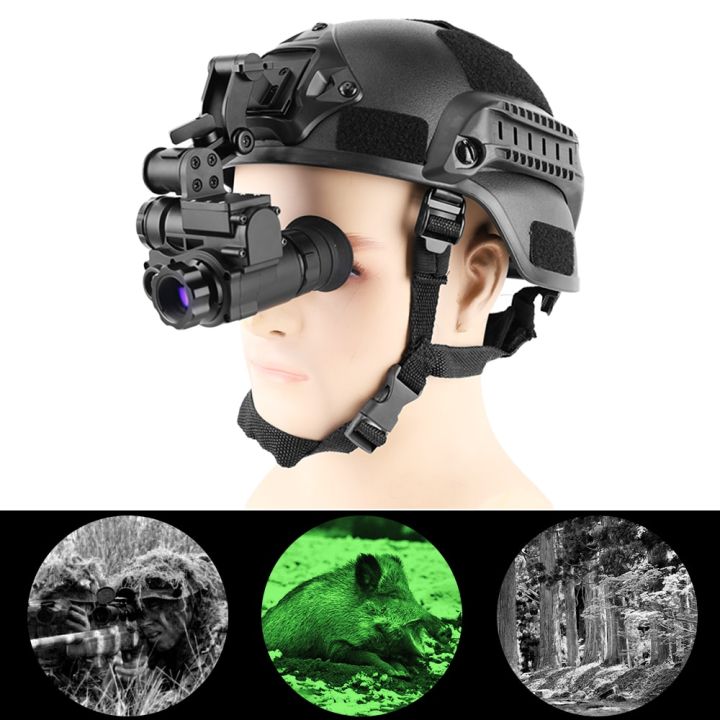Unveiling the Secrets of Night Vision: How Night Vision Goggles Work
In the darkness of night, our human eyes struggle to discern details and navigate our surroundings effectively. However, thanks to the remarkable technology of night vision goggles, we can pierce through the veil of darkness and gain an extraordinary advantage in low-light conditions. These specialized devices have become invaluable tools for military operations, law enforcement, search and rescue missions, and even recreational activities like nighttime hunting or wildlife observation. But how do these remarkable devices work? Let’s delve into the fascinating world of night vision and uncover the science behind these powerful visual aids.
The Principles of Night Vision
How do night vision goggles work?Night vision goggles work by amplifying the tiny amounts of ambient light present in the environment, even in seemingly pitch-black conditions. This process relies on two key principles: the ability to detect and amplify faint light sources and the conversion of that amplified light into a visible image that our eyes can perceive.
At the heart of night vision technology lies a specialized sensor called an image intensifier tube. This intricate device is capable of detecting and amplifying the faintest traces of light, whether it’s starlight, moonlight, or even the thermal radiation emitted by warm objects.
The Image Intensifier Tube: The Key Component
The image intensifier tube is a complex assembly of various components, each playing a crucial role in the night vision process. How do night vision goggles work?Here’s a breakdown of how it works:
1. Photocathode: The first component of the image intensifier tube is the photocathode, a thin layer of highly sensitive material that converts incoming photons (light particles) into electrons through a process called the photoelectric effect.
2. Microchannel Plate: The electrons emitted by the photocathode are then accelerated and multiplied by a microchannel plate, which acts as an electron multiplier. This component amplifies the number of electrons, thereby intensifying the faint light signal.
3. Phosphor Screen: The amplified electrons strike a phosphor screen, causing it to emit a bright green glow visible to the human eye. The pattern of this glow corresponds to the original light image, allowing the user to perceive a clear and detailed representation of the scene.
4. Power Supply: To ensure proper function, the image intensifier tube requires a precise and stable power supply, typically provided by batteries or an external power source.

Types of Night Vision Goggles
Night vision goggles can be broadly categorized into two main types based on their technological approach:
1. Image Intensification Goggles: These goggles rely on the image intensifier tube technology described above. They are widely used in military, law enforcement, and civilian applications due to their reliability and cost-effectiveness.
2. Thermal Imaging Goggles: Instead of amplifying ambient light, thermal imaging goggles detect the infrared radiation emitted by warm objects, including living beings. This technology is particularly useful for detecting heat signatures, making it ideal for search and rescue operations, surveillance, and wildlife observation.
Enhancing Night Vision Performance
While night vision goggles offer unparalleled visibility in low-light conditions, their performance can be further enhanced through various techniques and technologies:
1. Gated Imaging: This technique involves synchronizing the image intensifier tube with a pulsed infrared illuminator, allowing the goggles to capture images in complete darkness by illuminating the scene with short bursts of infrared light.
2. Image Fusion: Some advanced night vision systems combine image intensification and thermal imaging technologies, providing a fused image that combines the best of both worlds for improved situational awareness.
3. Augmented Reality: Modern night vision goggles can incorporate augmented reality features, overlaying critical information such as maps, targets, and navigation data directly onto the user’s field of view.

Applications and Benefits
Night vision goggles have found widespread applications across various industries and disciplines, thanks to their ability to overcome the limitations of human vision in low-light conditions. Here are some notable applications:
1. Military and Law Enforcement: Night vision goggles are essential tools for covert operations, surveillance, and navigation during nighttime missions, providing tactical advantages to military and law enforcement personnel.
2. Search and Rescue: These devices play a crucial role in search and rescue operations, enabling teams to locate and assist individuals in challenging environments, such as dense forests or remote areas, even during the darkest hours.
3. Wildlife Observation and Research: Biologists and wildlife enthusiasts use night vision goggles to study the nocturnal behavior of animals without disturbing their natural habitats, leading to valuable insights and conservation efforts.
4. Hunting and Outdoor Recreation: Night vision goggles have also found applications in recreational activities like nighttime hunting, allowing hunters to track and observe game animals without being detected.
5. Industrial and Commercial Applications: Various industries, such as manufacturing, construction, and transportation, rely on night vision technology for safe and efficient operations during low-light conditions.
The Future of Night Vision Technology
As technology continues to advance, the future of night vision goggles looks even more promising. Researchers are exploring new materials and techniques to enhance image quality, reduce power consumption, and increase the overall performance of these devices.
Additionally, the integration of artificial intelligence and machine learning algorithms could revolutionize night vision systems, enabling real-time object recognition, target tracking, and intelligent decision-making capabilities.

Conclusion
Night vision goggles have truly transformed our ability to navigate and perceive our surroundings in the darkness. By harnessing the power of light amplification and thermal imaging technologies, these remarkable devices have become invaluable tools across various industries and applications.
From military operations and law enforcement to scientific research and outdoor adventures, night vision goggles have opened up a world of possibilities, allowing us to extend our visual capabilities beyond the limitations of human sight.
As we continue to push the boundaries of technology, the future of night vision promises even more advanced and sophisticated solutions, further enhancing our ability to conquer the night and unlock new frontiers of exploration and discovery.







+ There are no comments
Add yours